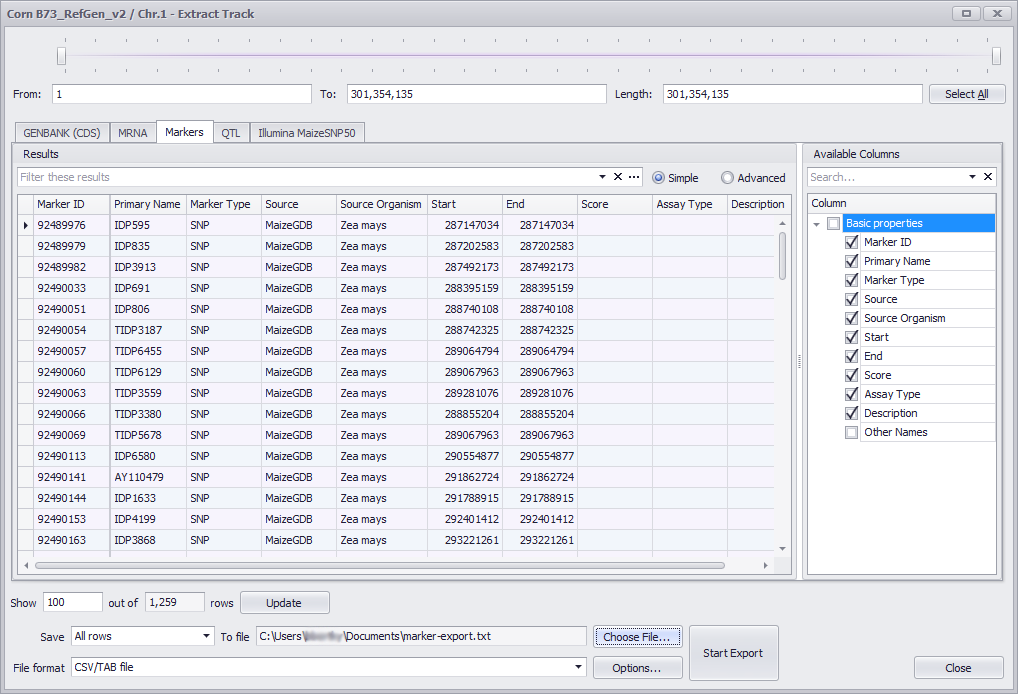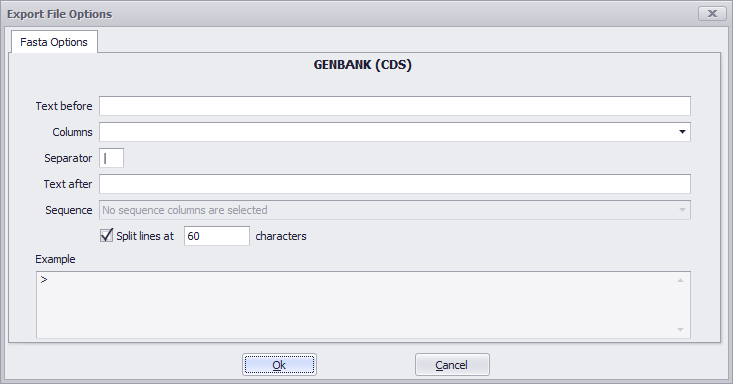Export Track Window (New)
Selecting Export Track from the right-click menu opens a window enabling you to export a map region, including a variety of annotation features (see the figure below). The file is created as either a comma-separated CSV file, which can be imported easily into Excel, as a GenBank, or as a FASTA file. Note that the information available will vary depending on which map region you choose. If you wish to export another map region use the sliders at the top of the window.

Follow the steps below to export the map region.
Tip
If you select the Enter names radio button it will open the Get Details for the Feature List window, with additional options for exporting. See Get Details for the Feature List for more information.
- In the Results panel click the appropriate tab to select the data type (e.g., GenBank (CDS), mRNA, FGENESH (CDS), etc.). Please note you can enter search terms to filter your results or enter the rows you want to display and then click Update.
Tip
See Filtering Results for additional filtering options.
- In the Available Columns panel select the columns you want to export.
- Select the rows you want to export in the Results panel and then click Export Selected Items or click Select All.
- From the Save drop-down list select All rows, Preview Rows, Selected rows, or Clear selection.
- Enter the file name in the To file text box or click Choose File to select an existing file.
- From the File format drop-down list select CSV/Tab file or FASTA file. If you selected CSV/Tab file you can click the Options button to add a header line and select the separator type (comma or tab) as shown below.

If you selected Fasta file you can click Options to specify the sequence type as shown below.

- Click Start Export.
Filtering Results
If you click the Advanced radio button, the entry field for the Simple search mode is hidden. A column-specific filter entry field is displayed directly under each column field name. If you enter text in a column filter, only rows with matches to the entries in the filter columns will be displayed. Columns can still be sorted by clicking on the column name. You can group samples by clicking on a column name and dragging it into the box above the column names row.
Dragging multiple column names into the box will create hierarchical groupings. The hierarchy is established by the order in which the column names are dragged into the box with the first column name at the highest level of the hierarchy. Dragging the column names to the left (higher level) or right (lower level) in the hierarchy graphic will raise or lower the column name in the hierarchy. You can also remove a column name from the hierarchy clicking on it and dragging it back to the column name row.
An Edit Filter button is displayed at the bottom right of the window above the Close button in Advanced mode. This will enable you to create more complex filters when needed. It can be used in conjunction with the options previously mentioned for Advanced filtering. If you click the Edit Filter button, the Filter Editor window will be displayed. See Using Advanced Filters for more information.
